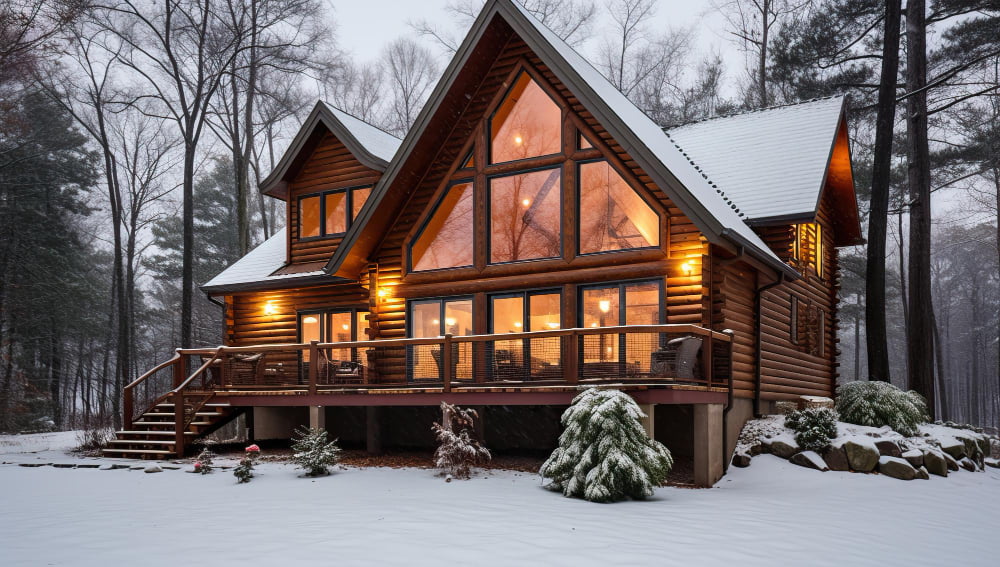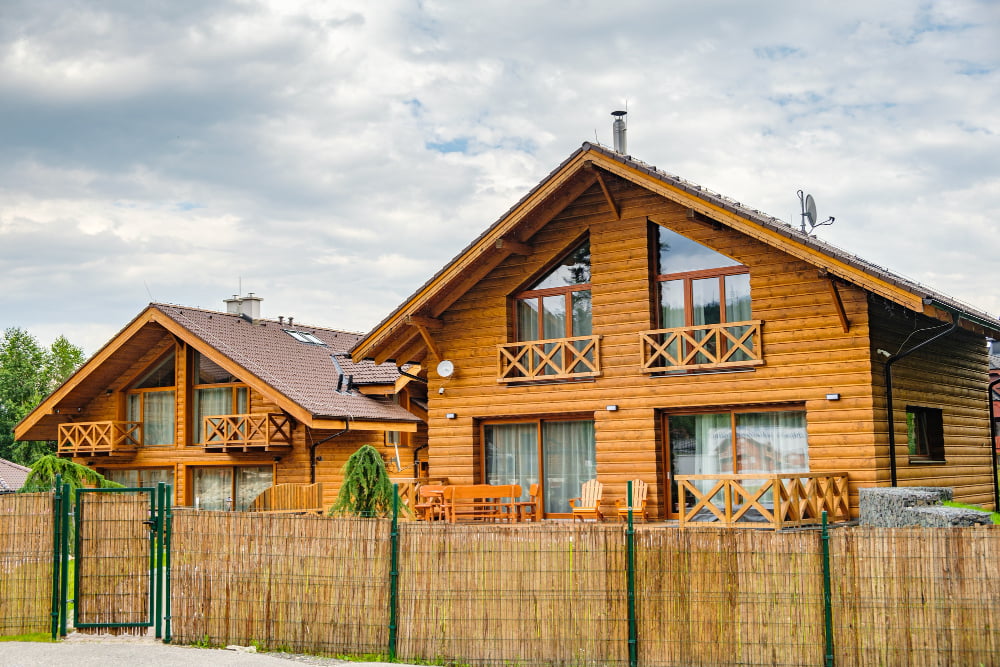Last updated on
Selecting the right cladding material for your home or building is a decision that goes beyond aesthetics; it involves considering durability, maintenance, and environmental impact. The exterior of your property plays a crucial role in both protecting it from the elements and enhancing its visual appeal.
In this ultimate guide, we’ll delve into the key factors to consider when choosing cladding materials, helping you make an informed decision that aligns with your preferences and practical needs.
Aesthetics and Architectural Style

The first and most apparent consideration when choosing cladding material is its visual impact. Your choice should complement the architectural style of your home or building, contributing to its overall aesthetic appeal.
For a modern and sleek look, materials like metal or glass-reinforced concrete (GRC) could be ideal, while traditional or rustic styles may benefit from the warmth of natural wood or classic brick. Pay attention to color, texture, and pattern to ensure the cladding seamlessly integrates with the surroundings. A thoughtful selection not only enhances the property’s curb appeal but also adds value to your investment.
Durability and Maintenance
Beyond appearance, the durability and maintenance requirements of cladding materials are paramount. Each material comes with its own set of characteristics that affect its lifespan and upkeep. For example, brick and stone are known for their longevity and low maintenance, requiring little more than occasional cleaning.
On the other hand, timber cladding may demand regular staining or sealing to protect it from the elements. Consider the local climate; materials that resist weathering and are resistant to pests and fungi are essential for ensuring a long-lasting and trouble-free exterior. Balancing aesthetics with practicality is crucial to guarantee the longevity of your cladding investment.
Environmental Impact and Sustainability

In an era where environmental consciousness is a priority, choosing cladding materials with low environmental impact is not only responsible but also increasingly popular. Opt for sustainable materials that are sourced ethically and have minimal ecological consequences.
Timber, when harvested sustainably, is an excellent eco-friendly choice, as it is renewable and has a lower carbon footprint compared to some alternatives. Additionally, consider materials that offer insulation benefits, contributing to energy efficiency and reducing your overall environmental footprint. Balancing aesthetic preferences with sustainable choices ensures that your cladding not only looks good but also aligns with a greener future.
Timber Product Specialists
Embarking on the journey of selecting timber cladding involves a nuanced understanding of wood types, finishes, and installation techniques. Timber product specialists are invaluable resources in this process, offering expertise that extends beyond the average consumer’s knowledge.
These specialists can guide you through the selection of the right timber species based on your climate and aesthetic preferences. Moreover, they provide insights into the various treatments and finishes available, ensuring your timber cladding not only looks stunning but also withstands the test of time against the elements.
Collaborating with timber product specialists ensures seamless integration of sustainable and visually appealing timber cladding into your architectural vision, making the process of choosing cladding materials a holistic and well-informed experience.
Budget Considerations
When embarking on a cladding project, understanding your budget is crucial. Different materials come with varying price points, and it’s essential to strike a balance between cost and quality. While some materials might have a higher initial cost, they could prove cost-effective in the long run due to lower maintenance requirements and extended durability.
Consider your budget constraints and explore materials that not only meet your aesthetic preferences but also align with your financial plans. Prioritize the long-term value and return on investment to make a decision that satisfies both your wallet and your desire for a visually appealing exterior.
Local Building Regulations and Restrictions
Before finalizing your cladding material choice, it’s imperative to familiarize yourself with local building regulations and restrictions. Different regions may have specific guidelines regarding the type of cladding allowed, especially in historical or environmentally sensitive areas.
Understanding these regulations helps you avoid potential legal complications and ensures that your chosen material complies with local standards. Consult with local authorities or engage a professional to navigate these regulations, ensuring a smooth and compliant cladding installation process that enhances the aesthetics of your property without running afoul of the law.
Future Trends and Innovations
As the architectural landscape evolves, staying abreast of future trends and innovations in cladding materials can add a forward-thinking dimension to your decision-making process. Explore emerging materials and technologies that offer not only aesthetic appeal but also improved performance and sustainability.
Keep an eye on advancements in composite materials, smart cladding systems, and eco-friendly innovations that may shape the future of exterior design. While respecting timeless styles, incorporating modern trends can future-proof your property and contribute to its long-lasting visual allure. Stay informed about the latest developments to make a cladding choice that stands the test of time in both style and substance.
Maintenance Tips for Long-lasting Beauty
Ensuring the longevity and beauty of your chosen cladding material requires proactive maintenance. Regular inspection and cleaning are vital to prevent the buildup of dirt, mold, or pollutants that can compromise the material’s integrity. For timber cladding, in particular, keeping an eye on moisture levels is crucial to prevent warping or rot.
Implementing a scheduled maintenance routine, including resealing or repainting when necessary, will not only preserve the aesthetic appeal but also extend the life of your cladding. Consult with professionals or refer to manufacturer guidelines to tailor a maintenance plan that suits your specific material, ensuring that your property maintains its allure for years to come.
In the pursuit of the perfect cladding material, a harmonious blend of aesthetics, durability, and environmental responsibility is paramount. Whether you opt for the classic appeal of timber, the sleek modernity of metal, or the enduring strength of brick, each choice reflects a unique aspect of your architectural vision.
Leverage the expertise of timber product specialists, consider your budget constraints, navigate local regulations, and stay attuned to emerging trends to create an exterior that not only stands the test of time but also contributes to a sustainable and visually captivating landscape. With careful consideration and the guidance of experts, you can embark on a cladding journey that transforms your property into a timeless masterpiece.
Recap:



